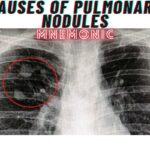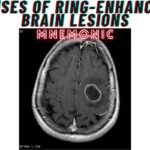Hyperkalemia is a condition in which there is an abnormally high level of potassium in the blood, it can have potentially serious consequences on the body, including affecting the heart’s rhythm; as demonstrated by ECG changes. Today, in this article we are going to share with you an easy-to-remember mnemonic for ECG changes in hyperkalemia. But before jumping to the mnemonic, let’s take a quick look at the classic ECG changes in hyperkalemia.
ECG Changes in Hyperkalemia
Here’s a quick overview of all ECG changes commonly seen in Hyperkalemia:
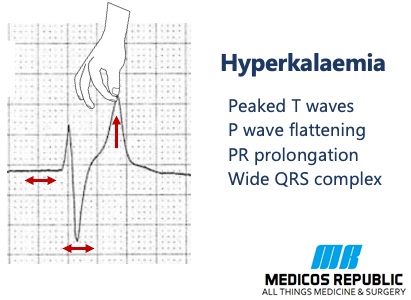
Let’s break this down and look at each of these Hyperkalemia ECG changes in more detail.
-
T Wave
- Tall Tented T Waves (a.k.a Peaked T waves) at serum potassium level 6.0 mEq/L or more
Elevated serum potassium levels cause the T waves on the ECG to become tall and narrow. The T waves can appear like the letter “tented,” which is why they are often called “peaked T waves”. Here’s a classic representation of Tall tented T waves:
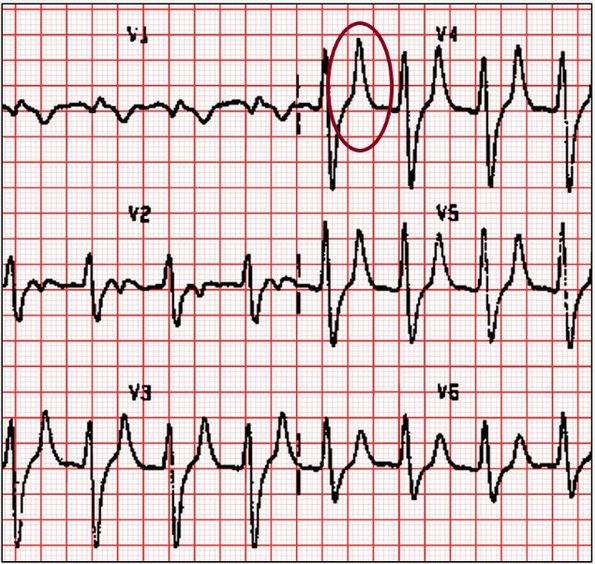
2. P Wave
- Flattening of the P wave
- Widening of the P wave
- P wave may disappear
The P wave is a representation of the electrical activity associated with atrial depolarization (contraction of the atria). Elevated potassium levels can cause the P wave to become smaller and harder to detect.

3. PR Interval
- Prolongation of the PR interval
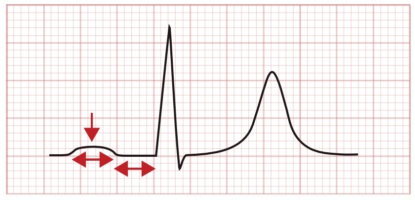
4. QRS Complex
- Broadening of the QRS complex
The QRS complex demonstrates the electrical activity associated with ventricular depolarization (contraction of the ventricles). When potassium levels are high, the electrical impulses can be disrupted, causing the QRS complex to become widened.
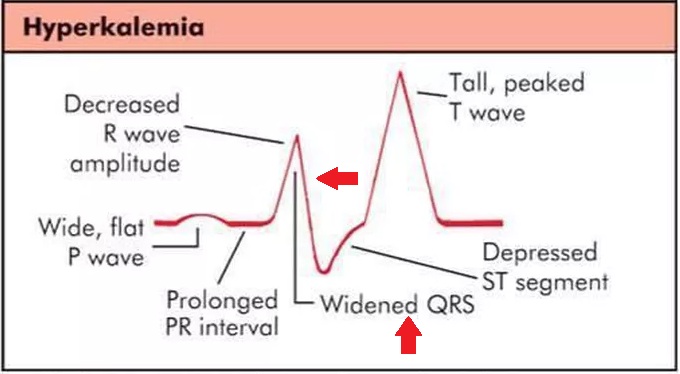
5. Sine-Wave Pattern/Asystole
- Loss of P-Wave
- No ECG waves can be differentiated, seen when serum potassium levels are > 9.0 mEq/L
- Asystole > FLAT ECG
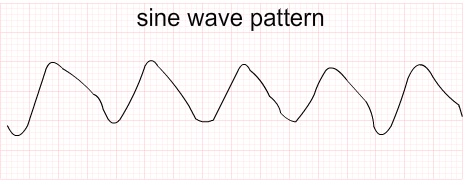
6. Ventricular Fibrillation
In severe cases of hyperkalemia, the heart can develop life-threatening arrhythmias, including ventricular fibrillation, which can lead to cardiac arrest and death.
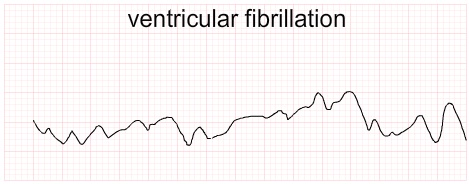
Hyperkalemia ECG Changes Mnemonic
Here’s a helpful mnemonic for ECG changes in Hyperkalemia: 🙂
TPRSA Mnemonic for ECG Changes in Hyperkalemia |
|
| T | Tall Tented T Waves |
| P | P wave widening/flattening PR Prolongation |
| R | QRS Complex Widening |
| S | Sine Wave Pattern |
| A | Asystole |
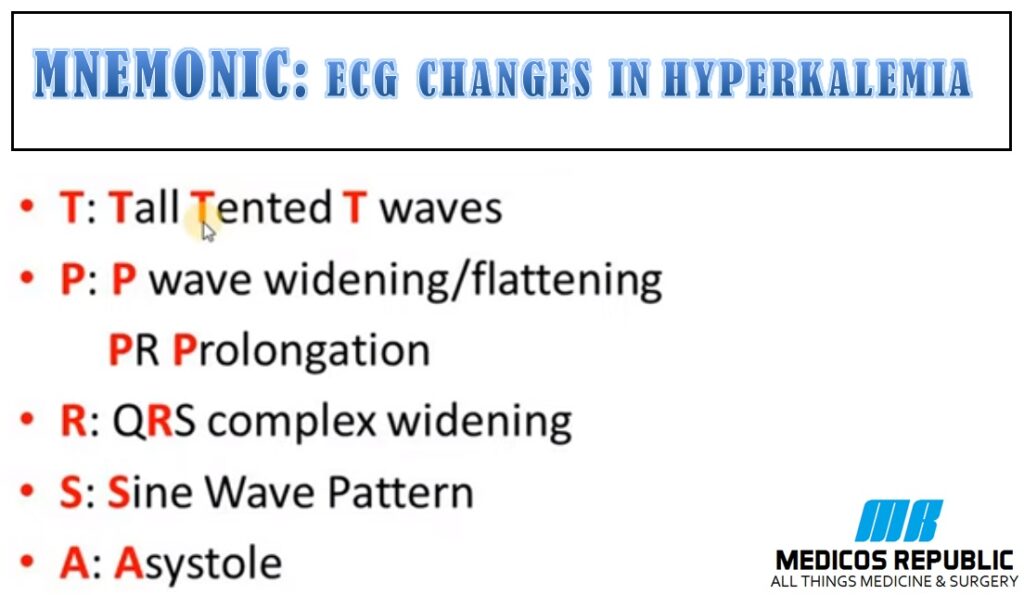
Tell us how you found this blog post. Share with us your mnemonic for ECG changes in hyperkalemia in the comment box below.
Happy learning! 🙂

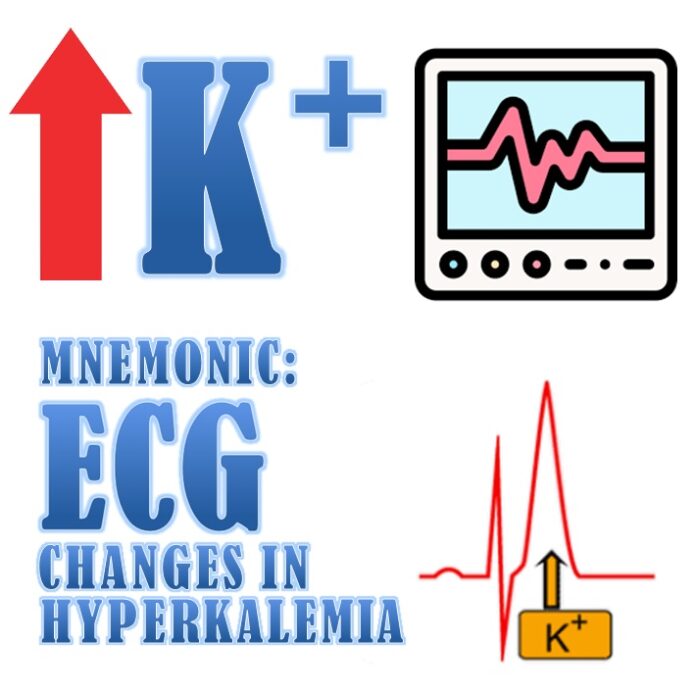
![How to Remember Southern, Northern, and Western Blot Tests [Mnemonic] How to Remember Southern, Northern, and Western Blot Tests](https://www.medicosrepublic.com/wp-content/uploads/2025/06/How-to-Remember-Southern-Northern-and-Western-Blot-Tests-218x150.jpg)

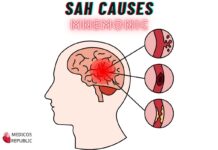

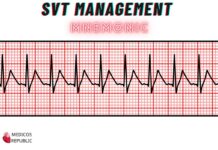




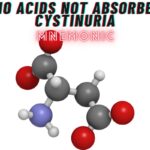
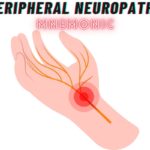
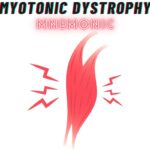
![Gerstmann Syndrome Features Mnemonic [Easy-to-remember] Gerstmann Syndrome Features Mnemonic](https://www.medicosrepublic.com/wp-content/uploads/2025/06/Gerstmann-Syndrome-Features-Mnemonic-150x150.jpg)
![Cerebellar Signs Mnemonic [Easy to remember] Cerebellar Signs Mnemonic](https://www.medicosrepublic.com/wp-content/uploads/2025/06/Cerebellar-Signs-Mnemonic-150x150.jpg)
![Seizure Features Mnemonic [Easy-to-remember] Seizure Features Mnemonic](https://www.medicosrepublic.com/wp-content/uploads/2025/06/Seizure-Features-Mnemonic-1-150x150.jpg)

![Recognizing end-of-life Mnemonic [Easy to remember]](https://www.medicosrepublic.com/wp-content/uploads/2025/06/Recognizing-end-of-life-Mnemonic-150x150.jpg)

![Multi-System Atrophy Mnemonic [Easy-to-remember] Multi-System Atrophy Mnemonic](https://www.medicosrepublic.com/wp-content/uploads/2025/06/Multi-System-Atrophy-Mnemonic-150x150.jpg)

![How to Remember Southern, Northern, and Western Blot Tests [Mnemonic] How to Remember Southern, Northern, and Western Blot Tests](https://www.medicosrepublic.com/wp-content/uploads/2025/06/How-to-Remember-Southern-Northern-and-Western-Blot-Tests-150x150.jpg)


